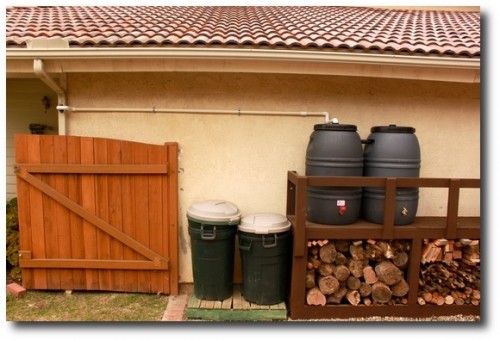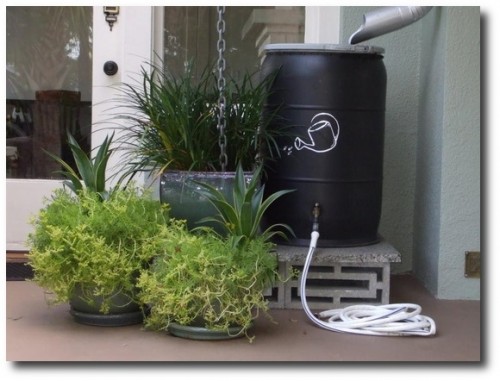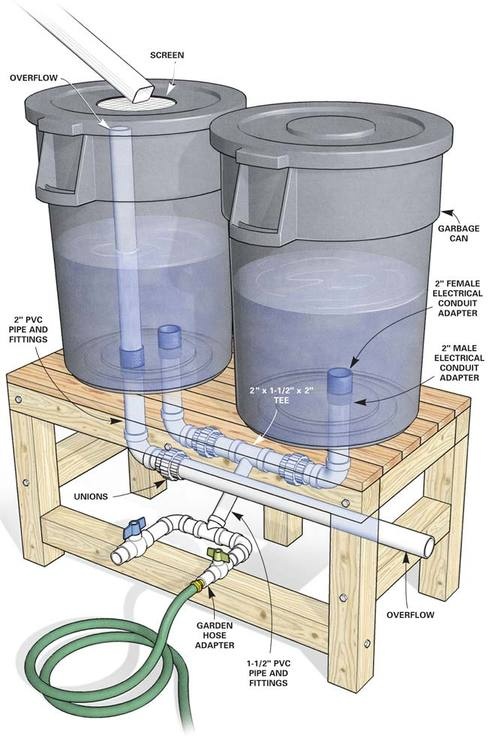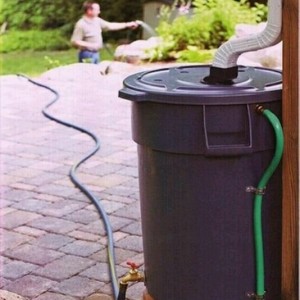 Don’t let a drizzly day put a damper on your mood — with a little preparation, those raindrops can save you and your community some serious money. Each gallon of rainwater that’s harvested — meaning collected and saved for later use — equals a gallon of treated city water that can be used in other places.
Don’t let a drizzly day put a damper on your mood — with a little preparation, those raindrops can save you and your community some serious money. Each gallon of rainwater that’s harvested — meaning collected and saved for later use — equals a gallon of treated city water that can be used in other places.
It also helps the environment by reducing erosion and evaporation due to runoff and keeps pesticides and fertilizers out of groundwater. Once harvested, rainwater can be used to water your garden, provide drinking water for animals, and in some cases, serve as drinking water for your family.
The Basics
Start by figuring how much water you want to harvest. A typical 25-foot by 40-foot home can divert approximately 600 gallons of rainwater in one hour of moderate rainfall. How much of that you decide to store should be based on your water needs — someone who is simply using their harvest to water a moderate-sized garden doesn’t need as much rainwater as a farmer looking to irrigate their field or provide drinking water for large livestock.
The most common way to harvest rainwater is collecting the water that runs off your roof by diverting it through gutters and downspouts that drain into a water barrel. Your home likely already has gutters attached to the roof; supplement those gutters by attaching downspouts made out of aluminum or plastic. Five-inch gutters need downspouts measuring three inches in diameter, while six-inch gutters require four-inch downspouts.
Insert a filter into the top of the downspout so debris, such as leaves, can’t clog the spout, and place a screen on top of the barrel at the bottom of the downspout so mosquitoes and other insects cannot get into the water.
Of course, you’ll also need a barrel to collect and store the water. You can purchase one for approximately $100 or create your own, either by building a barrel or repurposing an extra-large garbage can or plastic drum.
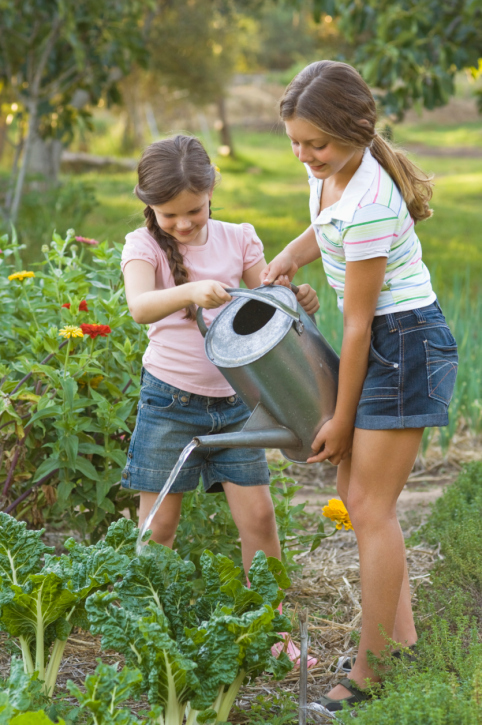
Collected rainwater can be used to water your flower garden.
The Set-Up
Get your rainwater collection going by determining the best place for the barrel, which should be placed underneath the downspout so the water can funnel into the barrel.
When you’ve figure out where it will go, dig a foir-inch hole that’s the size of a cinder block base, and then fill this area with quarter-inch pea gravel. Top it with cinder blocks, and then set your barrels on top of the blocks. Raising the barrels improves the water pressure and makes it easier to fill a water can from the barrel’s spigot.
If you want to use more than one barrel to collect rainwater, attach multiple barrels by running a hose between them.
Warnings
Make sure your water is safe to use by taking precautions. Don’t use a clear container, as it promotes algae growth. Cover all containers with a fine screen to keep mosquitoes out the barrel — these little pests carry West Nile Virus and can turn your barrel into their breeding ground.
Additionally, check local laws to determine if harvesting rainwater is legal — in some states, such as Colorado and Utah, water laws make collection illegal because homeowners don’t own water rights.
If the law is on your side, though, take advantage of the opportunity. Between saving money and saving the environment, it’s a win-win situation for homeowner and the community alike.
Kelsey Castle is a freelance writer who writes on home topics, as well as how to protect your online reputation.
Rainwater Set Up livingbeyondthebox.com
Harvesting Rain: Would you like to save some money on your water bill?
Harvesting rainwater will help you conserve both water and money.
Picture Credit- Pinterest
the ‘plunge pool’ utilizes the same prefabricated vessel used for the rainwater containment system. Brilliant! Not only is it a beautiful pool solution, in this case the benefits of these tanks go much deeper. The precast concrete rainwater tanks provide thermal massing, with the walls of the tanks being incorporated into the studio, ensuite and cellar spaces of the lower floor of the home flor.com




